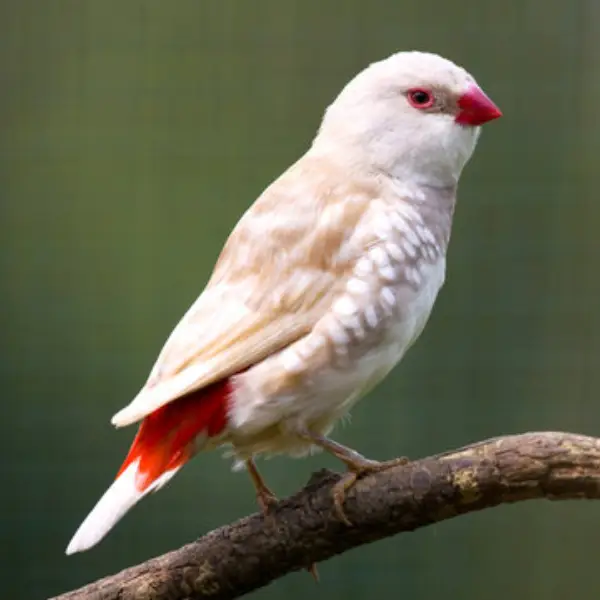Free shipping order over 20,000
Fawn Pastel Jawa
₨ 80,000 Original price was: ₨ 80,000.₨ 45,000Current price is: ₨ 45,000.
-
-
-
- Scientific Name: Padda oryzivora
- Size: Approximately 13-15 cm (5-6 inches) in length.
- Color: The Fawn Pastel Jawa is characterized by a soft fawn or beige coloration. The plumage is typically a pale, warm brown with a pastel-like hue, giving it a gentle and elegant appearance. The face and underparts are lighter, almost creamy or off-white, contrasting with the darker brown wings and back. The coloration may vary slightly depending on the specific mutation and breeding line.
- Beak: The beak is stout and conical, typically a light pinkish or ivory color, well-adapted for seed eating.
- Eyes: The eyes are dark, often appearing black, and stand out against the soft tones of the plumage.
- Legs and Feet: Legs and feet are generally pale pink or flesh-colored.
-
-
SKU: REF. LA-5766-9-1-1-1-1-1-1-1-1-1-1-1-1-1-1-1-1-1-1-1-1
Categories: JAWA FINCH, Uncategorized
Tag: jawa finch
Share
Share on facebook
Share on email
Important Keys:
Habitat
- Distribution: Java Sparrows are originally native to the islands of Java, Bali, and Bawean in Indonesia. However, due to their popularity as pets, they have been introduced to many other regions, including parts of Southeast Asia, the Pacific Islands, and even Hawaii.
- Environment: In the wild, they prefer open grasslands, rice fields, and agricultural areas. In captivity, they thrive in aviaries or large cages with plenty of space to fly and socialize.
Diet
- Primary Food: Their diet consists mainly of seeds, particularly those of grasses and cereals. Millet and other small seeds are often the staple in captivity.
- Supplementary Food: Fresh fruits, vegetables, and occasional protein sources like insects or egg food are important to provide a balanced diet, especially during the breeding season.
- Feeding Behavior: Java Sparrows are ground feeders, often seen hopping around and picking up seeds. In captivity, they are provided with seed mixes in feeding dishes or scattered on the ground.
Breeding
- Breeding Season: In the wild, breeding often occurs during the wet season when food is plentiful, but in captivity, they can breed year-round if conditions are favorable.
- Nest Location: They typically nest in tree hollows, crevices, or dense foliage. In captivity, they readily accept nest boxes filled with soft materials like coconut fibers or grass.
- Egg Quantity: Clutches usually consist of 4-6 eggs.
- Incubation Period: Incubation lasts about 12-15 days, with both parents sharing the responsibility.
- Fledging: Chicks fledge at around 21-25 days old and are fully independent a few weeks later.
Lifespan
- In the Wild: Typically around 5-7 years.
- In Captivity: With proper care, Java Sparrows can live up to 8-12 years or even longer.
Behavior
- Social Structure: Java Sparrows are highly social and thrive in groups. They are often kept in pairs or small colonies in captivity. Despite their social nature, they may become territorial during the breeding season.
- Vocalization: They are known for their soft, pleasant chirping. Their song is not particularly loud but is melodic and rhythmic, often used during courtship and social interactions.
![]()
Be the first to review “Fawn Pastel Jawa” Cancel reply
Related Products
-
-13%
Blue Star Finch
₨ 23,000Original price was: ₨ 23,000.₨ 20,000Current price is: ₨ 20,000. -
-30%
Gray Shaft Tail
₨ 20,000Original price was: ₨ 20,000.₨ 14,000Current price is: ₨ 14,000. -
-20%
Silver Diamond Firetail Finch
₨ 31,250Original price was: ₨ 31,250.₨ 25,000Current price is: ₨ 25,000. -
-8%
Albino Cut-throat Finch
₨ 65,000Original price was: ₨ 65,000.₨ 60,000Current price is: ₨ 60,000. -
-20%
Red Eyes Bengalese
₨ 3,750Original price was: ₨ 3,750.₨ 3,000Current price is: ₨ 3,000. -
-20%
-
-20%
Crested Dove
₨ 43,750Original price was: ₨ 43,750.₨ 35,000Current price is: ₨ 35,000.
Sign Up for Exclusive Birds Care Tips and Offers from Phool Panchi
Company links
Category
Contact
© 2024 Phool Panchi | Developed By v3Studio














Reviews
There are no reviews yet.